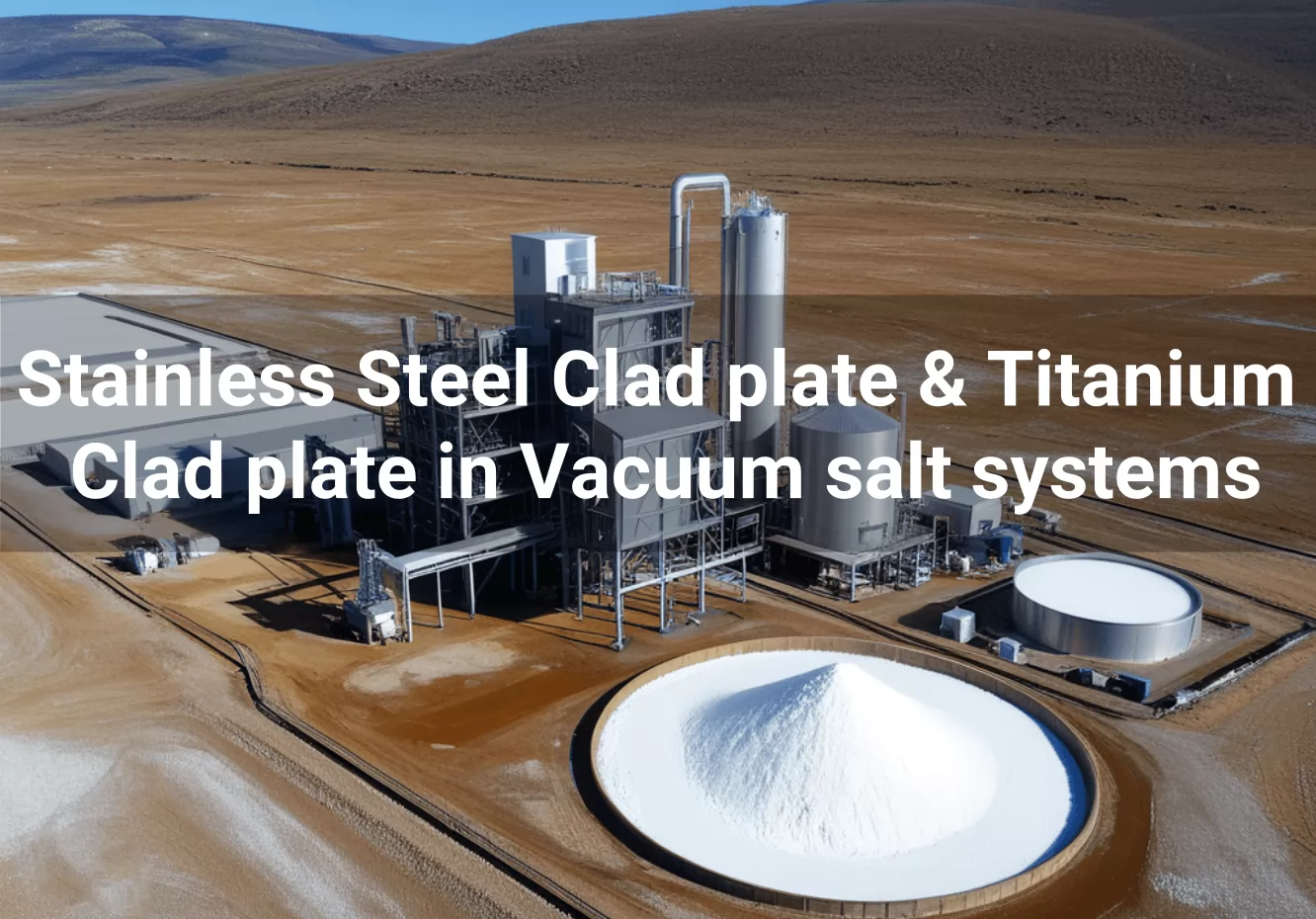


In vacuum salt production systems, corrosion is primarily influenced by the presence of high concentrations of chloride ions and other impurities in brine. These factors, combined with high temperatures, salt slurry abrasiveness, and the turbulent flow of brine and steam, pose significant challenges to equipment durability. Key components like evaporators, lean-rich liquid heat exchangers, and heating chambers are particularly vulnerable to these harsh conditions.
Corrosion in vacuum salt production manifests in various forms, including pitting, crevice corrosion, and erosion-corrosion. The complexity of the chemical and mechanical environment, coupled with operational and material variability, makes selecting appropriate materials critical for ensuring equipment longevity and performance.
Clad materials, including titanium-steel and stainless steel-steel clad plates, are recognized for their excellent corrosion resistance, mechanical strength, and cost-effectiveness. These materials are well-suited for key components in vacuum salt systems, offering significant advantages over traditional solutions.
Stainless steel-steel clad plates are widely used in vacuum salt production due to their resistance to chloride-induced corrosion and cost-effectiveness compared to more specialized materials like nickel alloys.
Titanium-steel clad plates are preferred for applications in the most corrosive and challenging conditions, particularly where chloride concentrations are extremely high.
While stainless steel-steel clad plates are more economical upfront compared to titanium-steel clad plates, they provide reliable performance in moderately corrosive environments, making them suitable for most vacuum salt applications. For environments with extreme corrosion risks, the higher initial cost of titanium-steel clad plates is justified by their superior durability and reduced maintenance costs.
By selecting the appropriate metal cladding material based on specific operational conditions, vacuum salt production systems can achieve an optimal balance between cost, performance, and longevity. Stainless steel-steel clad plates offer a practical solution for general applications, while titanium-steel clad plates provide an ideal choice for extreme environments. Both materials contribute to improving equipment reliability and reducing long-term operational costs.
In vacuum salt production, the choice of materials plays a crucial role in ensuring the longevity and performance of critical equipment, which faces challenging conditions such as high temperatures, abrasive salt slurry, and corrosive brine. Titanium-steel and stainless steel-steel clad plates offer excellent corrosion resistance, mechanical strength, and cost-effectiveness, making them ideal solutions for key components like evaporators, heat exchangers, and heating chambers.
Stainless steel-steel clad plates provide an economical and reliable solution for moderate corrosion environments, with their resistance to chloride-induced corrosion and robust structural properties. They are particularly well-suited for lean-rich liquid heat exchangers and evaporators, where cost efficiency and corrosion resistance are essential.
For more extreme environments with high chloride concentrations and aggressive conditions, titanium-steel clad plates are the preferred choice. Their superior resistance to pitting and crevice corrosion, coupled with their long service life, makes them an investment that reduces maintenance costs and improves operational reliability.
By carefully selecting the appropriate clad plate material based on specific operational needs, vacuum salt production systems can balance cost, performance, and durability, ensuring optimal equipment reliability and long-term operational efficiency.Contact us now, Get more information and a quote!



Fugo Tech is focused on the manufacturing of clad metal plate and distributes the Stainless Steel, Titanium, Nickel Alloy, Zirconium and other non-ferrous metal pipes, fittings, flanges, and fasteners.